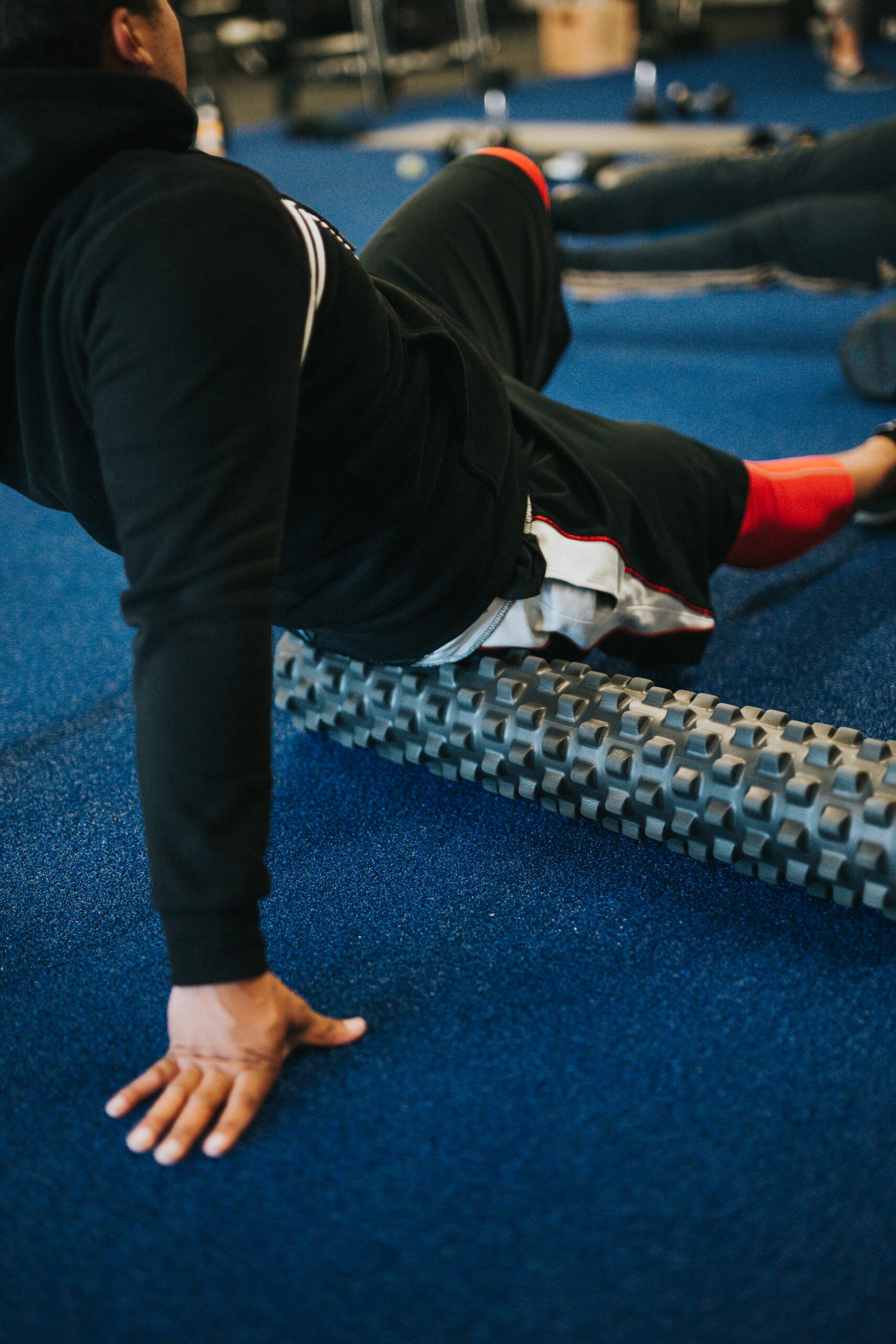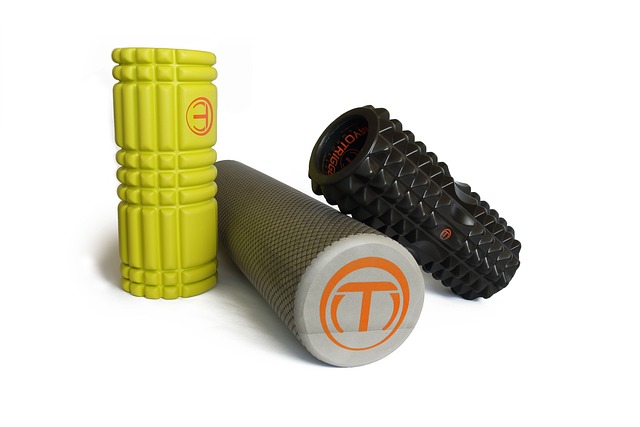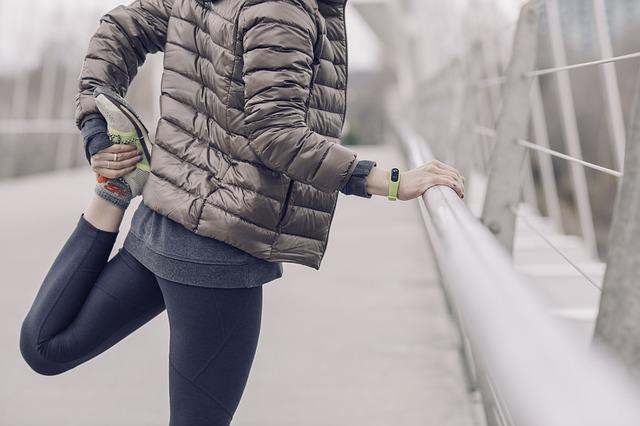Here’s everything you need to know about Foam roller, including how to foam different roll regions of your body to relieve tension.
Feeling stiff and unable to walk for a day or two after a strenuous workout is nothing short of horrible. The good news is that following a proper warm-up and post-workout recovery routine will not only reduce soreness and recovery time but also prevent future pain and stiffness after workouts.
You can also look into other products or habits to help lessen soreness. In addition to seeing a massage therapist or using a therapeutic massage gun, a foam roller may become your new fitness item.
How Does a Foam Roller Work?
Foam rolling is a sort of self-massage that uses a foam roller as a tool to relieve tight and aching muscles. A foam roller can be used anytime before or after a workout—or both. These options are supported by a tiny amount of research.
A review of the research on the use of Foam rolling, for example, concluded that it might reduce muscle stiffness and range of motion, particularly when paired with dynamic stretching and an active warm-up. According to other research, Foam rolling before an exercise is more effective than dynamic stretching and can enhance flexibility without compromising muscle strength.
According to some studies, Foam rolling after an exercise might minimize muscle soreness and increase performance. Though the benefits of Foam rolling appear to be promising, the results are just temporary.
Regardless, foam rolling provides immediate relief from sore and stiff muscles and may become one of those love-hate aspects of exercising that you eventually come to like.
To use a foam roller, first, identify the muscle group you wish to work on. Then, balance on the foam roller while targeting the muscle part you want to work on. Roll your body back and forth along the muscle’s length, utilizing your arms and legs for stability and control. That’s all.
It probably will take some time to get used to using a foam roller. But before you know it, you’ll be an expert at Foam rolling. Here are some warm-up exercises to get you started.
Hamstrings
If your hamstrings are painful and tight, use a foam roller to roll them out before and after your workout. Foam rolling your hamstrings can help reduce tightness and improve flexibility, which is especially beneficial for people who sit all day.
Here’s how to apply a foam roller to your hamstrings.
- Begin by sitting with your legs out in front of you.
- On either side, place a hard foam roller under your leg.
- Use your hands for stability while rolling back and forth on the foam roller.
- Slow down in the regions where you have the most tightness of your muscles.
Do this for 30 – 60 seconds before switching legs.
Stretching Quad muscles
Anyone who uses their quad muscles a lot and frequently and they can become tight very rapidly. Tight quads can also cause knee discomfort. Foam rolling can help relieve knee discomfort by loosening tight quads and increasing blood flow.
Here’s how to foam roll your quadriceps.
- Begin by lying down on your stomach.
- Place a roller beneath the front of one of your legs.
- Roll back and forth across the entire length of the upper leg, using your hands and the other leg for stability.
- Slow down or come to a halt over the most tender places. If this is too uncomfortable, place your other leg on the foam roller and hold it with your toes and forearms.
Do this for 30 – 60 seconds before switching legs.
Glutes
Tight glutes are frequently the source of or contribute to, lower back pain. Using a foam roller can help to release glute muscles, which can help to relieve back discomfort indirectly.
Here’s how to roll your glutes using a foam roller.
- Place your weight on one side of the foam roller.
- For support, place one or both hands on the floor behind you.
- Roll the foam roller in a circular motion over the area with the most discomfort.
Do this for 30 – 60 seconds before switching sides.

Lateral Expansion
Tight and often used lateral muscles have a negative impact on a range of motion and posture. Poor posture is associated with a slew of additional pains and diseases. To reduce back muscle stiffness and enhance range of motion and posture, try the lateral rollout.
A lateral rollout with a foam roller is demonstrated here.
- Lie on your side, either on the floor or a mat, with your knees bent and your legs piled on top of each other.
- Place the roller horizontally beneath your upper back, with the arm on the bottom out in front of you.
- Roll the foam roller back and forth gently, gliding more slowly over the most vulnerable places.
Do this for 30 – 60 seconds before switching sides.
Shoulder
Tight shoulder muscles can cause neck and upper back strain and discomfort. This can be excruciating, especially if you work at a desk all day. However, Foam rolling your shoulders might assist in easing pain and strain.
Here’s one method for using a foam roller on your shoulder.
- Face down on the floor.
- Place the foam roller beneath your shoulder, parallel to your body.
- Allow your shoulder to rest totally on the roller.
- Roll the foam roller from left to right slowly.
Continue for 30-60 seconds before switching sides.
Calves
Foam rolling your calves can assist in increasing flexibility and reducing calf muscle tension. This can be useful when climbing stairs or running.
Here’s how to use foam roller for your calves.
- Sit on the ground; your legs outstretched in front of you.
- Place the roller horizontally under one of your calf muscles.
- Cross the opposite leg over the top of the first.
- Stabilize yourself by placing your hands behind you on the floor.
- Roll the foam roller slowly over the muscle, changing your weight to massage it.
- Place your top leg on the ground if this is too painful. Switch to the other leg and repeat.
Roll your leg from ankle to knee for up to 2 minutes per leg. For 30 to 60 seconds, apply persistent pressure to a single spot of pain.
Mid-Back
Rolling your back in Foam can relieve pressure points, relax muscular knots, and enhance blood flow to the muscle. This can help to lessen back pain, relieve soreness, and increase the range of motion.
Here’s how to apply a foam roller to your lower back.
- Place the roller underneath the upper part of your back while lying down on the floor.
- Bend your knees and firmly plant your feet on the floor. At this time, your back should be lying on the foam roller.
- Lock your hands behind your head, elbows bent and pointed to the sky.
- Lift your body off the ground slightly.
- Roll your upper back slowly up and down, pausing just behind your shoulder blades.
- Repeat for 30 to 60 seconds.
To Conclude
Though foam rolling exercises are not a long-term cure, when done regularly, they can provide short-term relief for tight and aching muscles. Begin by identifying the muscle groups that are causing you the most trouble, then get a foam roller and get moving.
If you’re not sure how to foam roll properly, a physical therapist, professional personal trainer, or coach can advise you on which Foam rolling activities are best for you. If you continue to have tightness, discomfort, or pain, you should consult a doctor.


